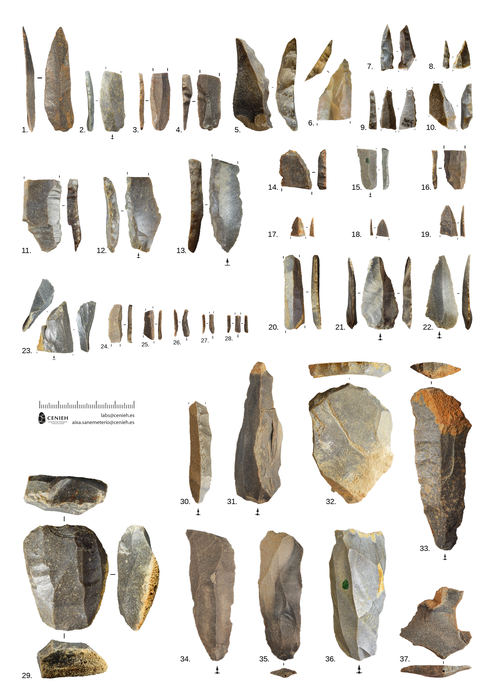Neandertal populations in the Iberian Peninsula were experiencing local extinction and replacement even before Homo sapiens arrived, according to a study published March 30, 2022 in the open-access journal PLOS ONE by Joseba Rios-Garaizar of the Archaeological Museum of Bilbao, Spain and colleagues.

Credit: Rios-Garaizar et al., 2022, PLOS ONE, CC-BY 4.0 (https://creativecommons.org/licenses/by/4.0/)
Neandertal populations in the Iberian Peninsula were experiencing local extinction and replacement even before Homo sapiens arrived, according to a study published March 30, 2022 in the open-access journal PLOS ONE by Joseba Rios-Garaizar of the Archaeological Museum of Bilbao, Spain and colleagues.
Neandertals disappeared around 40,000 years ago, but many details of their extinction remain unclear. To elucidate the situation, it is useful to explore how Neandertal populations were changing during their final millennia. In this study, researchers examined the distribution of a tool complex known as the Châtelperronian, which is thought to be unique to certain populations of Neandertals in France and the Iberian Peninsula.
The researchers examined over 5,000 remains of Châtelperronian tools from a site called Aranbaltza II in Barrika, in the Northern Iberian Peninsula, dating to around 45,500 years ago. Comparing this site with other nearby Neandertal tool sites, they document that the Châtelperronian system does not overlap in time with older Neandertal technologies in this region, suggesting that Châtelperronian tools were not developed from earlier Iberian technology, but instead originated elsewhere before migrating into the region. They also found that Châtelperronian tools appear earlier than the first Homo sapiens tools in the Iberian Peninsula.
Based on this evidence, the authors suggest that older Iberian Neandertal populations disappeared, taking their tool styles with them, and were replaced by different Neandertal groups using Châtelperronian tools, likely migrating from France, and these populations were in turn replaced by Homo sapiens. The researchers propose that these patterns of local Neandertal extinction and replacement will be an important area of future study, as they might have played a significant role in the decline and ultimate demise of Neandertals.
The authors add: “Neandertals with Châtelperronian technology occupied the Northern Iberian Peninsula ca. 43,000 years ago. This territory was unoccupied at the time, following the earlier disappearance of local Neandertal groups, along with their Mousterian technology.”
#####
In your coverage please use this URL to provide access to the freely available article in PLOS ONE: https://journals.plos.org/plosone/article?id=10.1371/journal.pone.0265219
Citation: Rios-Garaizar J, Iriarte E, Arnold LJ, Sánchez-Romero L, Marín-Arroyo AB, San Emeterio A, et al. (2022) The intrusive nature of the Châtelperronian in the Iberian Peninsula. PLoS ONE 17(3): e0265219. https://doi.org/10.1371/journal.pone.0265219
Author Countries: Spain, Australia, U.S.A., U.K., France, Denmark
Funding: Research at Aranbaltza site has been funded by Diputación Foral de Bizkaia (2013-2020), Gobierno Vasco-Eusko Jaurlaritza (2014-2015), Harpea Kultur Elkartea (2013-2017), Edestiaurre Arkeologi Elkartea (2018). OSL dating research conducted by M.D. and L.J.A. was partly supported by Australian Research Council Future Fellowship grant FT200100816. AGO was supported by Ramón y Cajal fellowship (RYC-2017-22558). The funders had no role in study design, data collection and analysis, decision to publish, or preparation of the manuscript.
Journal
PLoS ONE
DOI
10.1371/journal.pone.0265219
Method of Research
Observational study
Subject of Research
People
Article Title
The intrusive nature of the Châtelperronian in the Iberian Peninsula
Article Publication Date
30-Mar-2022
COI Statement
The authors have declared that no competing interests exist.




